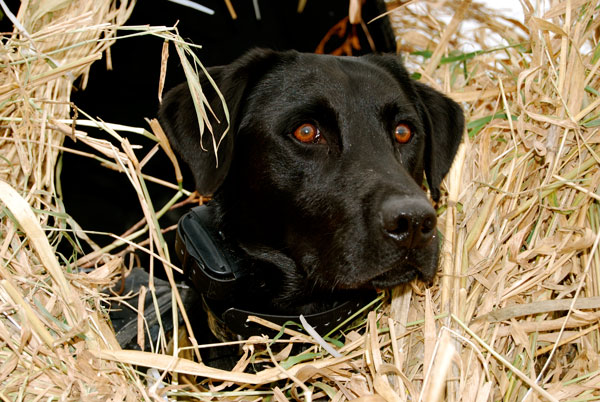Thirty years ago, when I left Litchfield, Maine, in Dad’s station wagon in the fall of 1991 bound for Syracuse University and the Newhouse School of Public Communications, I’d been a vegetarian for three years, but I’d never heard the word vegan spoken aloud. That was about to change.
I grew up in central Maine, where vegetarianism was a normal thing for me since my non-vegetarian parents had vegetarian friends and mixed with the veg-positive 1970s organic farming crowd. Yet it wasn’t until Christmas of 1988 that I stopped eating animals. That fall I’d written and delivered a speech about animal rights, as part of an annual sophomore English competition held at Oak Hill High School in Wales. The speech won an award, but left me haunted by the conditions of animals confined in the livestock and laboratory industries.
Christmas morning that year, my maternal grandmother arrived early and Dad made waffles with freshly whipped cow’s milk cream, strawberries stewed with sugar and a side of bacon. I ate one bite of that bacon and my stomach rejected it. In the bathroom, I vomited, and regurgitated memories of my faithful pig Fifi, whom I’d captured in a pig scramble at the Litchfield Fair when I was 5.
Fifi was mostly white with one black ear, and Mom had pointed her out when we looked at the litter of piglets huddled against their enormous mother in a pen before the scramble began. Soon I was in a fenced-in area of the dirt-floored pulling rink with a shrieking scramble of piglets and children. I’d grown up around pigs and caught Fifi right away. And just like that the piglet with one black ear belonged to my family. Fifi would never see her mother again.
Like most pigs I’ve known, Fifi was a loving creature. She missed her mom, snuggled into humans the way dogs do and would head down to the lake for a swim, if allowed. I cuddled Fifi and played with her as she matured. Days went by and Fifi was full grown but no less friendly. Still, I was a farm girl, so I knew what was coming.
One day, Mom casually remarked at dinner that the pork chops on our plates were Fifi’s flesh. I put down my fork. But it took 10 more years and that Christmas morning with waffles and bacon before I connected the meat in my mouth to the larger system of animal oppression. I became a vegetarian in the bathroom that Christmas morning.

Avery Yale Kamila stands in what would become her mini-kitchen on move-in day at Haven Hall at Syracuse University in 1992. Photo courtesy of Avery Yale Kamila
At the time, I was working as a cashier at the highway rest stop Burger King in Gardiner and knew about a secret menu item — the Veggie Whopper with Cheese. It was really a Whopper with Cheese minus the meat patty, and I ate a lot of those cheese sandwiches during high school.
Inside Haven Hall, what was then an all-girls dormitory in the northeast corner of campus, I unpacked my boxes and suitcases and met my smart, vegetarian roommate (who had taken so many AP classes she was starting as a sophomore). We headed down to the attached dining hall. Vegetarian choices were everywhere in the airy space, and we had no problem filling our plates.
Soon we were reading through a vast guide to campus clubs, activities and social organizations, and both my roommate and I decided to join one called Syracuse University for Animal Rights, or SUFAR (pronounced SUE-far). At the first meeting I attended, a club member introduced himself to me while we waited for the meeting to start and asked if I was a vegan. I said no and he talked about animal-free food and a philosophy of do no harm. Then he handed me John Robbins’ 1987 book “Diet for a New America” and told me to keep it.
Back in my dorm room, I devoured the book at a rapid pace, my heart pounding as Robbins illustrated the realities of modern animal farming. Time seemed to stand still as I reached page 112 and a brief section titled “Her Babies.” Here Robbins explained something that should have been obvious to me, a person who grew up spending a great deal of time at Granddad’s dairy farm in Richmond.
I knew that in order for cows to produce milk they had to first have a baby. And I knew that those babies were taken from their mothers within hours of their birth. What I didn’t realize was that while the day-old female calves were sent to Granddad’s heifer farm up the street, the day-old male calves were auctioned off to other farmers who would cage them, improperly feed them, slaughter them and sell them for veal.
I finished the book and from that moment on I’ve lived a vegan lifestyle. At the dining hall, this was no big deal. Syracuse University in 1991 was already offering soy milk (in multiple flavors), vegan casseroles, veggie burgers, a massive salad bar loaded with beans and tofu and the all-around student favorite: the breakfast cereal bar with dozens of popular brands.
While I now avoided the self-serve, frozen yogurt machine and its topping bar, I discovered that the nearby campus health food store (where I could shop using my meal card) sold both Tofutti ice cream and vegan doughnuts, along with all kinds of other vegan snack foods and microwave meals.
Syracuse accommodated vegans and vegetarians in grand style, yet it also catered lavishly to meat eaters, with veal appearing regularly on the dining hall menus. I joined other SUFAR members holding protest signs outside of Haven and other dining halls on the nights veal was served. We handed out veal information cards to the students waiting in line to enter the hall. The university soon removed veal from the menu.
At the bottom of a deep drawer in a bedroom dresser, I find a white T-shirt printed in a style popularized in the 1980s by the Banana Republic catalog. The now collectible Banana Republic T-shirts featured black and white old English wildlife engravings paired with the words “Banana Republic: Travel & Safari Clothing Co.” The one I find features a similar wildlife image with a giraffe and a rhino, but this one is drawn by an uncredited Syracuse student and topped by the words “SUFAR Republic: Animal Liberation.” We wore them to the protests.
By my sophomore year I upgraded to a larger, single dorm room in Haven Hall, and with a hand-me-down mini-fridge from a cousin and a brand new microwave and popcorn popper, I was able to make my own hot vegan breakfasts and study snacks while still eating lunch and dinner in the dining hall.
During my junior year, two friends and I rented a furnished apartment on Ackerman Avenue. I made most of my own meals, often simple foods such as hummus sandwiches, baked potatoes, pasta and porridge. A favorite was a veggie burger recipe I learned from my vegetarian roommate, which called for mashed chickpeas, cooked rice, diced onions, tomato paste and herbs. I still make the burgers, but I now work in panko bread crumbs to keep the burgers firm and flippable.
Later in the fall semester, we learned about a falafel shop on nearby Westcott Street, where we could get containers filled with amazing falafel paired with a tahini dipping sauce for only $3. Over the next two years, I ate a lot of falafel.
My vegetarian roommate drove home with me to Maine during Thanksgiving break in 1993, and my dad made an impressive vegan rice dish baked inside a hollowed-out pumpkin, which he’d grown in his organic garden. We took a trip to Portland and ate at the Pepperclub, located where the Honey Paw is today. With half of its menu vegan and vegetarian (and handwritten in chalk above the bar), the Pepperclub was the closest thing Portland had to a vegetarian restaurant in those days. I loved their mezze plate, their veggie burger and, much later when they added breakfast, their tempeh hash.
During that Thanksgiving break, the Pepperclub capped off our season of gratitude with vegan chocolate cake. Today, vegan baked goods are available all over the city, but for more than a decade afterwards, the Pepperclub’s chocolate cake remained the only vegan cake available in Portland. My husband and I even served it at our wedding in 2005.
Yet by the time I transferred to and then graduated from the SUNY College of Environmental Science and Forestry in 1995 and moved back to Maine to take a job in Camden helping organize ethics seminars for military brass, Fortune 500 leaders and educators, there were enough vegan lunch options in that seaside town that I could get a different takeout vegan lunch every day of the week. My favorite was a bagel from the Bagel Cafe stuffed with its thick, vegetable-filled hummus.
Thirty years ago, vegans didn’t have luxuries such as food trucks, fast food restaurants or Beyond Burgers, but we did have falafel takeout, tons of hummus and homemade chickpea burgers. I’ve been grateful for every bite. I can only imagine what the next 30 years of vegan food will deliver.
Avery Yale Kamila is a food writer who lives in Portland. She can be reached at: [email protected]
Twitter: @AveryYaleKamila
Related Stories








Invalid username/password.
Please check your email to confirm and complete your registration.
Use the form below to reset your password. When you’ve submitted your account email, we will send an email with a reset code.